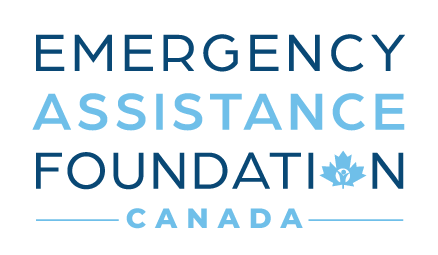
FAQ
Disaster & Hardship Relief Funds can provide much-needed assistance to those impacted by unforeseen disasters and personal hardships.
A recent research report conducted by The Aspen Institute and Commonwealth identified numerous benefits of employee-focused relief funds, including:
Workers feel grateful and relieved. Research participants shared resounding feelings of gratitude and relief regardless of how large of a grant they received.
Workers feel more connected to their employers and coworkers. 72% stated that they were more likely to stay with their current employer than leave for a company without a fund.
Workers are better able to build and maintain financial health. The fund served as a key resources for workers during a time of need.
Workers report positive impacts on job performance. 64% felt that receiving a grant enabled them to be less distracted at work.
Source: https://www.aspeninstitute.org/wp-content/uploads/2019/04/Employee_Hardship_Funds.pdf
There are numerous factors that contribute to relief fund success, including:
- Donations are entitled to a tax credit and grants are non-taxable.
- Regulatory compliance.
- A grant process that includes strong due diligence and vetting procedures balanced with the need to make grants quickly.
- Awareness of relief fund best practices.
- Live data flow during large scale events.
- A broad and clear Charitable Class and grant criteria including many common types of events and expenses for both disaster relief and hardship.
- Senior leadership endorsement and an engaged oversight committee.
- Robust communications about the program and its success stories, equally focused on encouraging donations and promoting opportunities to apply for grants.
Appropriate benchmarks vary by fund depending on the longevity of the program, size and demographics of the Charitable Class, and overall program design.
Funding Benchmarks & Best Practices:
- 25-50% funding from employees
- 10-40% of employees contributing
- Employer matching a % of all donations and directly donating a % of total funding
- Ability for vendors and others outside the organization to donate
Application Benchmarks & Best Practices:
- 0.25-1% of employees applying for grants
- 90% or more of applications submitted awarded a grant
- Real-time monitoring to balance application and donation volume
Grantmaking Benchmarks:
- Average grant size is 25-40% of the grant maximum amount if the maximum is sufficiently large
- Average grant size is 90-100% of the grant maximum for smaller grant maximums
When launching a fund, objective grant criteria are established. The fund’s basic grant criteria defines who is eligible to apply for a grant (the Charitable Class), the events and expenses for which they may apply, the timing within which they may apply, and the grant minimum and maximum amounts.
Examples of events that may be included: natural disasters, epidemics, military deployments, house fires, serious injuries, etc.
Examples of expenses that may be included: food, rent, funerals, medical, car repairs, counseling, unexpected childcare, etc.
The Basics:
- The fund cannot be excessively controlled by the sponsoring entity.
- The beneficiaries of the fund must constitute a Charitable Class that is either indefinite or of sufficient size and is not organized or operated to benefit particular individuals.
- Donations to the fund cannot be earmarked for specific individuals.
- The nexus between employer and employee must be broken, resulting in the applicant being an individual who meets the grant criteria rather than an employee.
- Other than as an initial qualifier, employment is not a relevant factor in the application or selection process, or in the amount or type of assistance provided.
- The fund is not an "employee benefit" and it does not fulfill a legal obligation of the employer.
- The fund cannot be used to recruit employees or induce employees to continue their employment or otherwise follow a course of action sought by an employer.
- Administration of the fund must be performed by people who have no financial interest in the sponsoring entity. (Or by a broad committee of people that understands that they are acting as agents of the organization rather than representatives of the sponsoring entity.)
- The fund must have specific, documented eligibility parameters that are objective and nondiscriminatory.
- The Charitable Class must be informed of the existence of the fund, including the objective grant criteria.
Please note that the above list is not all-inclusive.
